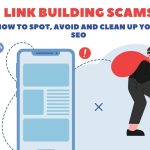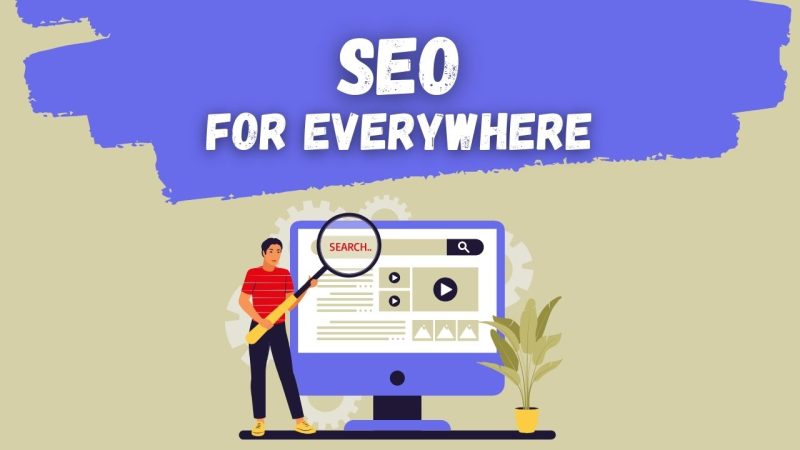
SEO For Everywhere: Why You Should Optimize for All The Platforms in 2025
Adam White
Posted on February 13, 2025
It’s 2025, and AI has been transforming our work since its inception. For marketers, this technology has been a mixed blessing. Thanks to AI, tasks that once took a week to complete can now be finished in minutes. However, without human input, the results can often feel generic.
The SEO industry is expected to grow to $106.9 billion by the end of 2025, up from approximately $90 billion. But like in any sport that evolves, SEO rules are changing, demanding a broader focus.
Now, What do I mean by ‘demanding a broader focus’’?
Traditionally, SEO has been synonymous with Google, largely because of its long-standing market dominance. But remember, SEO stands for ‘Search Engine Optimization,’ not ‘Google Optimization.’
Recent reports from Search Engine Land highlighted that Google’s market share has dipped below 90% for the first time since 2015 (source). This shift begs the question: where are these users going?
In this article, we’ll look at these shifts and discuss strategies to enhance our SEO efforts and continue to drive organic visibility in 2025 and beyond.
Why Diversifying Your Organic Traffic is Important
Diversifying your traffic sources doesn’t mean abandoning strategies that have proven successful. Instead, it’s about complementing your current efforts by tapping into additional channels.
Let’s say your website enjoys good organic visibility on Google. That’s great, but it doesn’t mean you should solely focus there. What about other platforms where your audience might be active?
Platforms like LinkedIn, Pinterest, and others also offer substantial opportunities for visibility. The key is to continue what you’re doing well while simultaneously optimizing for these new channels.
A practical approach to this strategy is repurposing existing content. It’s a long-term play that can yield substantial rewards over time.
But why is diversifying important?
To understand this, imagine you’re a business owner who has relied heavily on Google SEO, which has been effective until 2024. Suddenly, a major Google update reduces your traffic by 70%.
What do you do next?
This scenario isn’t just hypothetical. Following the major December update last year, many businesses experienced just such a downturn. You can find numerous accounts on forums like Reddit of content creators who were heavily impacted by algorithm changes. While some stories might be exaggerated, not everyone is fabricating their experiences.
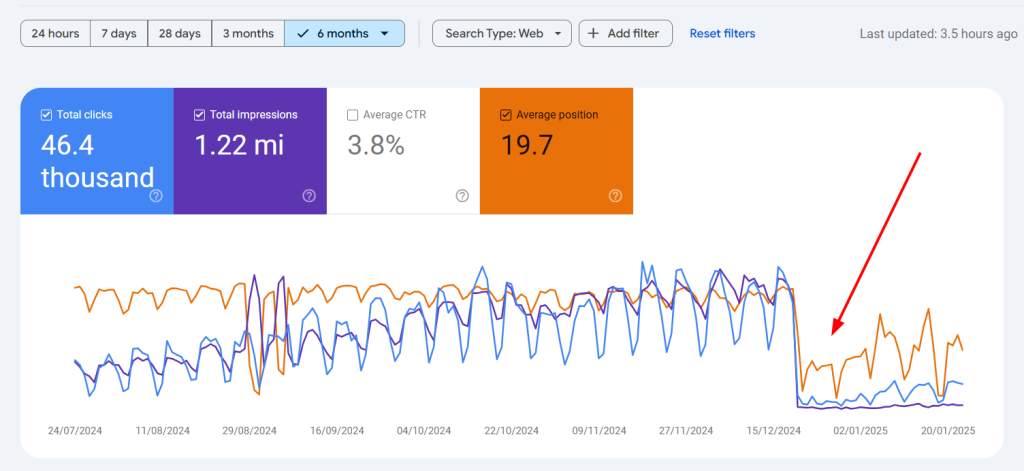
This realization prompted me to write this post. Putting all your eggs in one basket with Google SEO is risky. By diversifying your SEO efforts across multiple platforms, you can mitigate these risks and create a more resilient marketing strategy.
Another reason that I want to add here is something that is straightly coming up from a search engine.
Recently, Yandex a Russian search engine’s algorithm papers were leaked. There were around 1922 ranking factors in there. Yandex isn’t the same as Google but very much the same.
In the report, we found ranking factor 1367 that awards sites that have healthy percentage of traffic from social networks (see the screenshot below)

Ranking factor 250, that says if the percentage of traffic from search engines is too high can be viewed as a negative ranking factor (see the image below)
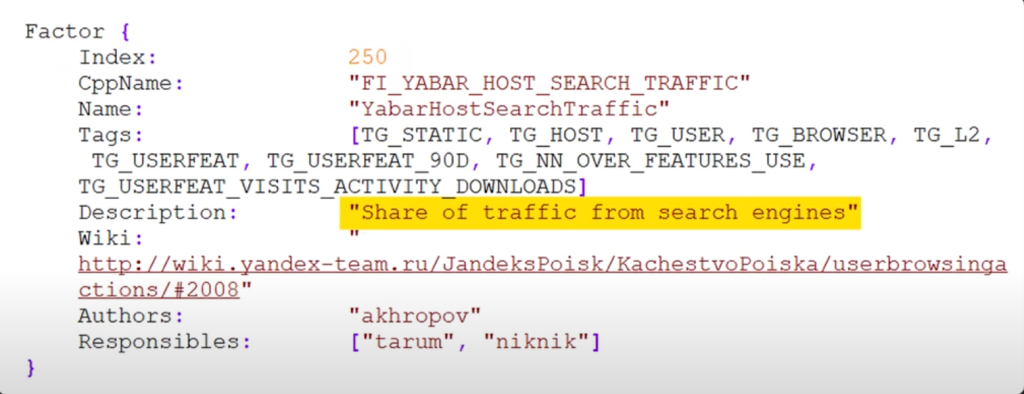
Why You Should Start Looking For Other Platforms
Should you start picking more channels & start optimizing for it?
Instead, this would require deep research & understanding of your business and customer. If you are an agency that is SEOing for some brand, it becomes more important that you know in & out of that particular business
The top priority should be again to understand the business and understand the user journey. Over the past years, as the technology has developed, it has become difficult to track user journeys, but still, if you know the customers, a touch point can be created, this also includes the platforms you can have for different touch points.
Let me guide you through an example so that you better understand how presence on social channels can help you in various aspects of the user journey.
Let’s take an example of a small DTC (Direct-to-Consumer) skincare brand. Suppose a potential customer, Emma, is looking for an organic moisturizer. Here’s how her journey might unfold across different platforms:
- Discovery (Instagram & TikTok)
Emma comes across an influencer’s skincare routine on Instagram, where your product is mentioned.
Later, she watches a TikTok where someone does a ‘before-and-after’ review of your moisturizer. - Consideration (Google & YouTube)
Intrigued, she searches on Google: “Best organic moisturizer for dry skin” and finds a blog (yours or a third party) comparing different products.
She then heads to YouTube to watch in-depth reviews. - Decision-Making (Pinterest & Reddit)
She saves a few moisturizer options on her Pinterest board to revisit later.
She checks Reddit’s skincare community to see if people are discussing your brand and what real users are saying. - Purchase (Brand Website or Amazon)
Finally, she decides to buy. If your brand has an optimized DTC website, she purchases directly. Otherwise, she might head to Amazon for faster shipping.
Amazon Bedrock pricing is competitive too, especially if there are deals. For brands aiming to compete in the online marketplace, factoring in Amazon Bedrock pricing is crucial. - Post-Purchase Engagement (Email & Twitter/X)
After purchasing, she receives an email with skincare tips and product usage guides.
She shares her experience on Twitter/X, and your brand replies, strengthening customer relations.
So in this example, If your brand only focused on one platform, say just SEO on Google, you would have missed key interactions in Emma’s decision-making process. By having multiple touchpoints, you ensure that your brand is present at every stage of the customer’s journey.
Leverage Parasite SEO
What is Parasite SEO?
Parasite SEO is an SEO strategy where marketers leverage high-authority websites to rank content quickly on search engines. Instead of building authority from scratch on their own websites, they publish content on platforms that already have strong domain authority—such as LinkedIn Pulse, Medium, or Men’s Journal.
Since these websites have an established reputation with Google, content published on them can rank faster than content on a brand-new or low-authority website.
However, Parasite SEO is not a long-term strategy—rankings can drop quickly if the host site removes the content or if Google tightens its policies. That’s why the focus is often on getting ROI as soon as possible before potential ranking losses.
How Parasite SEO Works
- Find the Right Platform – Identify high-authority sites that allow user-generated content and have a history of ranking well.
- Target Long-Tail Keywords – Don’t just optimize for a primary keyword; include multiple long-tail variations to maximize visibility.
- Leverage Authority – Since these platforms already have strong SEO, your content can rank quickly, often within days or weeks.
- Avoid Linking Across Multiple Parasite Sites – Cross-linking between different parasite pages (e.g., linking a LinkedIn post to a Medium post) can be risky. If one page gets taken down or penalized, it can negatively impact the others.
Current Best Platforms for Parasite SEO (as of February 2025)
- LinkedIn Pulse
- Medium
These platforms still allow user-generated content and have strong domain authority, making them effective for Parasite SEO. However, Google’s stance on this tactic has been evolving, so it’s essential to monitor updates and adjust strategies accordingly.
What a time to see this post on parasite SEO. See below

I was writing this article and suddenly this popped up on my phone, thought of sharing this with you guys. This is how parasite SEO ideally works, you increase your domain reputation, and then you post some affiliate links with high-searched volume keywords.
Focus on Increasing Brand Search Volume
What is brand search volume? Well, think of a company like Tesla.
Tesla is a brand name & you can look at the search volume it gets per month using Serpple keyword Insight tool
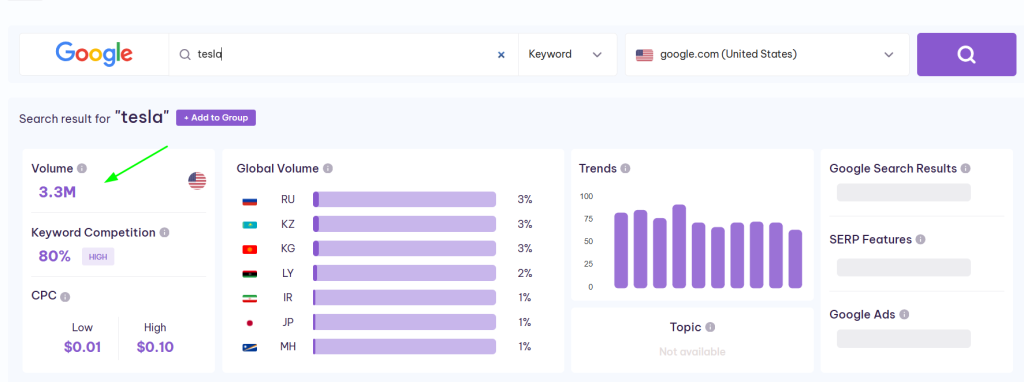
Sites with a massive brand volume outperform sites that don’t have. Matt Diggity researched this recently & found this pattern.
Also, recently sites that were hit hard by core updates, got recovered when their brand search increased.
So how to increase brand search volume?
Imagine you are running a blog about pets.
Now imagine someone Googles “best pet blogs”, they find your website at the top of one of the lists, & what do they do next?
They look for your brand. Increasing brand search.
So the basic step would be to reach these sites and get your brand name (or other brand entities) listed in the listicle or roundup articles.
Alternatively, you can do it yourself also, by using some free methods. You can go to Reddit, or LinkedIn and mention your brand wherever relevant it could be. We have listed some of the free SEO you can do when you are just starting out on blogging.
YouTube
YouTube can create a buzz & build brand inquiry faster than any medium on the planet. Almost everyone connected digitally knows YouTube and watches it.
Plus many people end up searching on Google for your videos, just because it’s easier than loading YouTube & then searching.
Lead User To Goal Completion
For years, the SEO community has been discussing whether or not Google considers user behaviour or clicks in its algorithm.
Recently, it was revealed and they say that their use of user signal is in the form of Navboost, which also uses a model based on COEC to re-rank content based on user engagement.
Now, if you take a step back & think about things, user signals are a great indicator if people like content or not. Did they spend time reading it or did they bounce?
Now, someone could spend 20 mins on a website page, but that wouldn’t be considered a positive user experience.
Here comes the goal completion and why it is important. You want to end the user’s search journey as fast as possible.
A goal completion is a fast answer to Google, that the user’s query was solved. They didn’t go back to the browser, nor did they have to search for another website to get answers.
To optimize your content for goal completion using modern web development and digital marketing techniques, you need to question yourself.
Does my content answer the user’s question “As Fast as Possible”? It doesn’t matter if you have the best article on the planet
The other best thing you can do is include the “Key takeaway section at the top of your article”
Build a Community
Have you ever noticed how big brands have their communities where users interact, share experiences, and help each other out? These communities often become powerful spaces where customers not only solve problems together but also become passionate advocates for the brand.
When you build a community around your product, you create more than just a support group—you create a place where users feel connected. People love being part of something bigger, and when they find others who share their interests, they naturally engage, share tips, and even promote your product without being asked.
This organic engagement often feeds into effective product management processes, as user feedback helps you understand which feature matters the most.
A strong community can also act as a help center that practically runs itself. Instead of relying only on your support team, users can find answers from other experienced members. Over time, this reduces your support workload while building trust within your user base.
Looking ahead to 2025 and beyond, it’s worth thinking about how you can create a space for your users to come together. Whether it’s through a dedicated forum, a Facebook group, or a Slack channel, a community keeps your users engaged and makes them feel like they’re part of your journey.
The best part? As users connect, share feedback, and help each other, they become more invested in your brand. Many of them will naturally turn into advocates who recommend your product to others. And that kind of promotion is more valuable than any ad campaign.
The point I want to share is the power of networking would be one of the assets a business owner will have, this will be above all the marketing channels one would have or develop over time.
Conclusion
As a marketer, you need to evolve and so does your marketing. That’s what we have discussed in here.
One more thing that would be excellent is to keep talking to customers and know their pain points.
The real solution lies in knowing the ground problems, one that cracks it from the bottom will evolve in 2025.
Published by
Adam White
Adam White is a 20+ year SEO professional who has optimized over 400 websites, built and sold over 20 internet and SaaS businesses all with SEO as the main traffic source. Follow him on Twitter/X
All stories by Adam White
